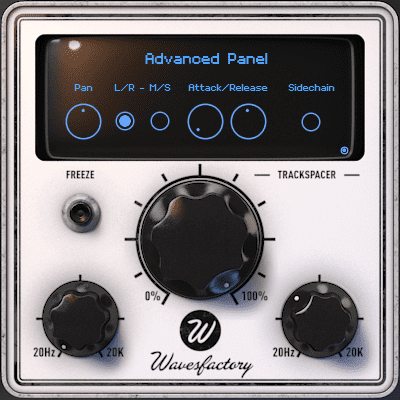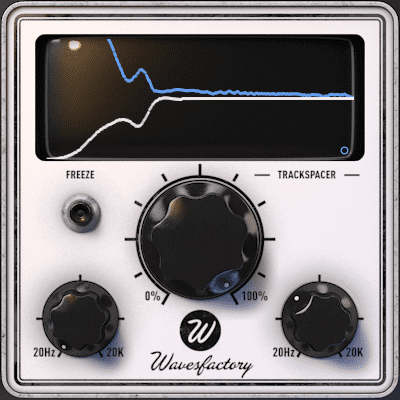Could the second generation of Wavesfactory’s utility plugin solve the age-old problem of making space for all the elements of a mix?
Wavesfactory are perhaps best know as purveyors of third-party instrumental sample libraries for Kontakt and Logic’s EXS24. However, last year they introduced their first plugin, TrackSpacer, which combined a number of pre-existing techniques into a processor that was designed to help provide frequency separation between elements in a mix. Flash forward to now, and we have TrackSpacer 2.0, where a number of aspects of the functionality have been tweaked and enhanced.
 TrackSpacer is a 64-bit plugin that comes in VST, AU, RTAS and AAX versions. Installation is pretty straightforward, with authorisation requiring only an emailed serial number. Without the serial you are limited to demo mode, which does at least give you the chance to take the plugin for a spin, albeit with an occasional audio watermarking sound and lack of control setting recall.
TrackSpacer is a 64-bit plugin that comes in VST, AU, RTAS and AAX versions. Installation is pretty straightforward, with authorisation requiring only an emailed serial number. Without the serial you are limited to demo mode, which does at least give you the chance to take the plugin for a spin, albeit with an occasional audio watermarking sound and lack of control setting recall.
Under the hood
TrackSpacer 2.0 is perhaps best understood as a cross between a ducker, multi-band compressor, vocoder and dynamic EQ. In effect, it pushes down the level of specific frequency elements in one channel based on their prevalence in another channel.
It’s a common technique to scoop out certain frequencies of an instrumental backing track to make way for similar frequencies in the lead vocal, or to use sidechain compression on the bass triggered by a kick drum. Both try to create space in a mix. TrackSpacer tries do this selectively and dynamically.
Initially you must insert the plugin on a channel to be processed. Next route the audio from another channel (providing the control signal) into its sidechain section. As you push up the main Ratio control you should notice more frequencies being removed from the processed channel. A graphical display shows two curves – one for the control signal’s spectral content and one for the processed audio’s EQ curve. Two further controls limit the processing to a narrower range of frequencies. In fact, these are just low- and high-pass filters which are applied to the control signal’s audio path. For example, if you find too much bass is being subtracted, then increasing the LPF frequency will limit the effect in that area of the frequency spectrum. A Freeze button captures the EQ as a static curve.
TrackSpacer 2.0, besides adding AAX support, also offers an advanced panel where you can specify that the plugin processes mid and side signal components separately (rather than as a conventional stereo audio stream) and the relative strength of processing for each. Here you also get a simple envelope section that determines the reaction speed of the overall processing. Both of these allow you to tweak the plugin to achieve less obvious unwanted sonic artefacts in comparison to 1.0.
€59 doesn’t seem an unreasonable price for a plugin such as this. It certainly works on a range of material and caters for subtle as well as overtly bombastic treatments. However, it isn’t a ‘load and go’ plugin – and is at its best when you spend time tweaking the controls to suit the material in question. I urge you to give the demo a spin.
Here’s how it sounds when used to combine three loops:
The Verdict
Price: €59
Purchase: Wavesfactory TrackSpacer 2.0
The Final Word
Not a foolproof solution to the problem of creating space in a mix, but a useful and fairly priced tool.

08.36 AM
sounds better unprocssed lol
03.25 PM
lol true